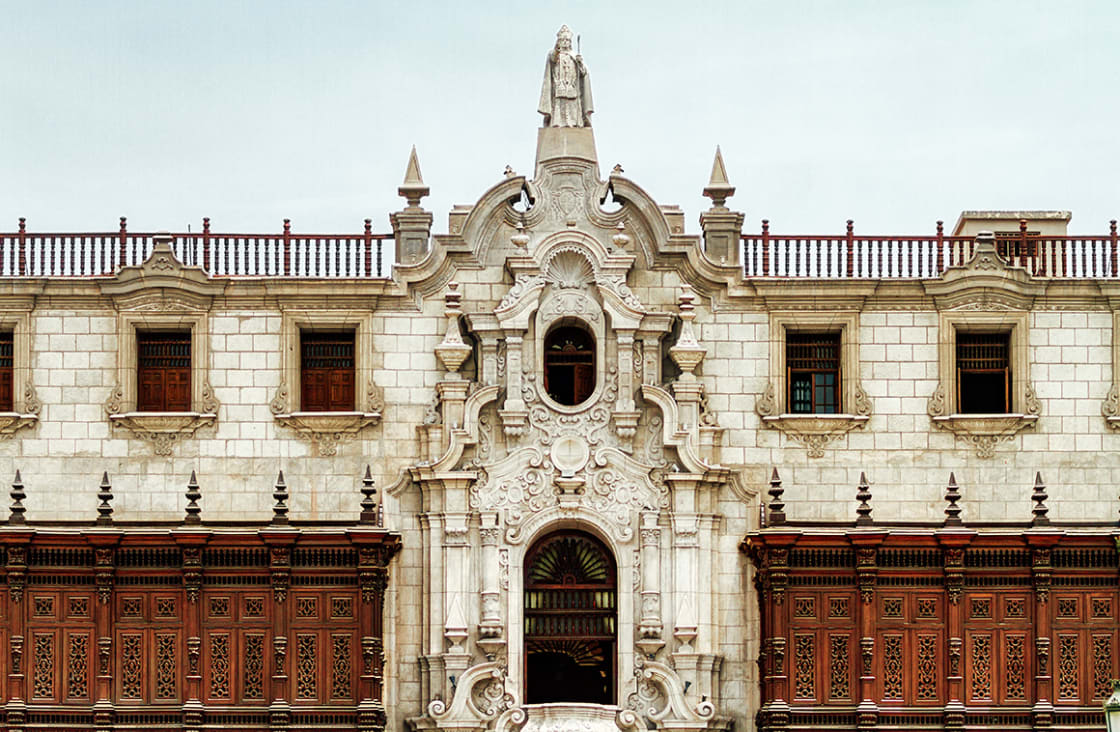
A designated UNESCO Cultural World Heritage Site, the historic downtown of Lima, Peru is bursting with magnificent monuments, notable art and architecture, and a rich history that spans over five hundred years. Here is a glimpse of what makes the historical center of Lima worthy of this impressive distinction, and the sights and things to do visitors won’t want to miss while in the historical center of Lima, Peru.
Three times prized “The Garden City”, Lima was also called “The Very Noble, Distinguished and Very Local City of the Kings” as stated on the coat-of-arms received from the Kings of Spain on December 7th, 1537.
When the Kingdom of Spain began to conquer the New World, Lima was its capital. Lima functioned as the headquarters of the Spanish government’s authority, and acted as the center of the biggest political, commercial, and clerical power in all of the Spanish colonies.
Lima’s most impressive period was during the 17th and 18th centuries, when Lima prospered as the center of an extensive trade network. With the constant construction of impressive palaces and houses, churches and convents containing valuable artistic gems, and wealthy nobility that resided within its luxurious mansions, Lima quickly gained fame as the richest and most prosperous city in all of the colonies.
The city had to be walled to protect against pirate attacks and suffered a variety of damage from earthquakes, yet it reigned strong until later in the 18th century despite these setbacks. The Republican Age followed, in which Lima became the first city in all of South America to have a railroad (Lima- Callao), telegraph and gas illumination.
It was these aspects of Lima’s history (notable constructions, art, architecture and immense beauty) that led to the historical downtown of Lima being declared a “World Heritage Site” by UNESCO. Today, most of these rich constructions of Lima’s golden age remain, protected and preserved for future generations.

Lima Main Square
Founded by Francisco Pizarro in January of 1535, this is the main square and urban center of the city of Lima. It is surrounded by notable buildings from the colonial period, and has a magnificent ornamental bronze fountain in the center dating back to 1650.

Basílica Catedral Of Lima
The Cathedral began construction the day Lima was founded, to be completed in 1540. It has since been rebuilt as a result of several large earthquakes, but maintains its original elements. Noteworthy aspects as the altars consecrated to Santo Toribio de Mogrovejo and the Virgen de la Evangelizacion. The Virgen statue, a gift from King Carlos V of Spain, was crowned by Pope John Paul II during his visit to Peru in 1985. Other impressive features include the Spanish baroque style chapel, beautiful balconies outside, a Christ made of carved ivory, choir stalls, and a crypt below with remains of Francisco Pizarro (Lima’s founder) himself.

Peru Government Palace
Originally the elected place of Francisco Pizarro, it has since acted as the headquarters of all the Peruvian governors, Viceroys and Presidents until now. Notable features are the magnificently conserved rooms inside, including the official residence of the President of the Republic, and the ceremony of the changing of the guard that takes place out front every day at 11:45am.
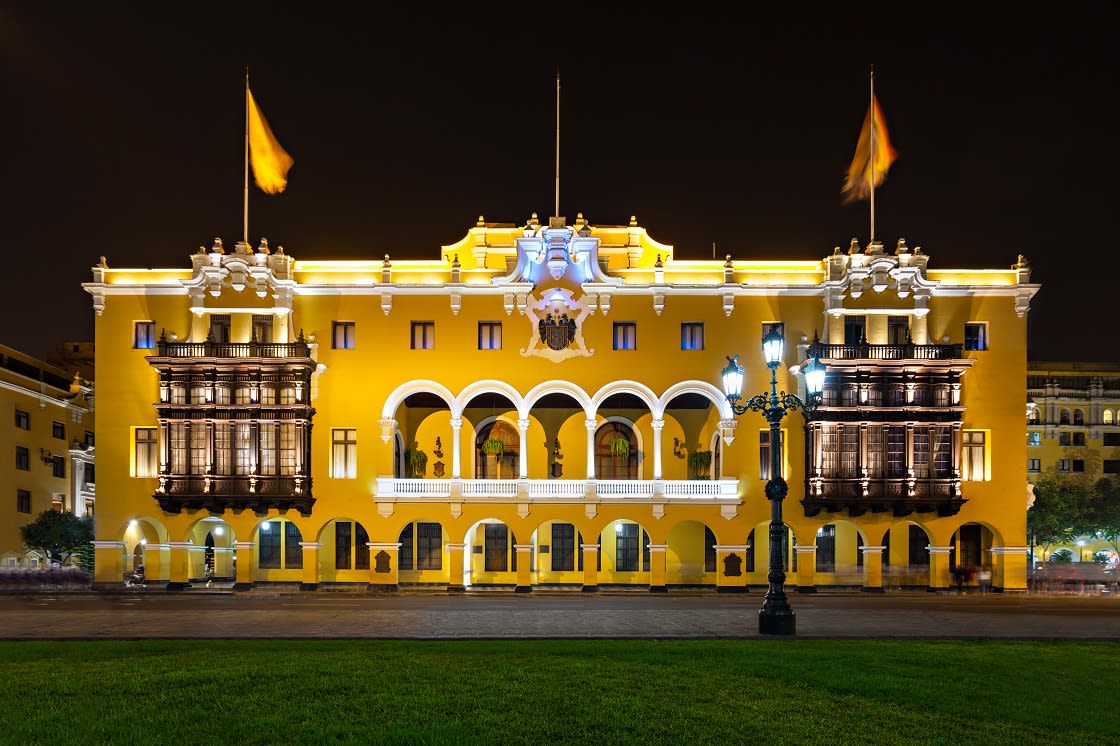
Lima City Hall
Founded by Nicolas de Ribera “the Old” in 1535, it occupies the same place as the first town hall of the county. Notable features are the beautiful colonial wooden balconies, an important collection of Peruvian paintings and photographs, and historical documents from both the founding of Lima in 1535, and Lima’s independence in 1821. You can easily see The Palacio Municipal when taking a tour of Lima.
Located in Pasaje Santa Rosa, this gallery is used to showcase works of art including photographs, paintings and costumes of old Lima.
Also on Pasaje Santa Rosa, this monument commemorates the last Indian governor of the Rimac Valley, Tauli Chusco.
One of the largest Chinatowns in South America, this part of Lima’s historic downtown offers an interesting glimpse into the Chinese heritage of many of the city’s residents. Wander through the lively streets where you can sample authentic Chinese food, as well as the Chinese-Peruvian fusion joints called “chifas”. Make sure to visit the architectural piece at the entrance to Calle Capon.
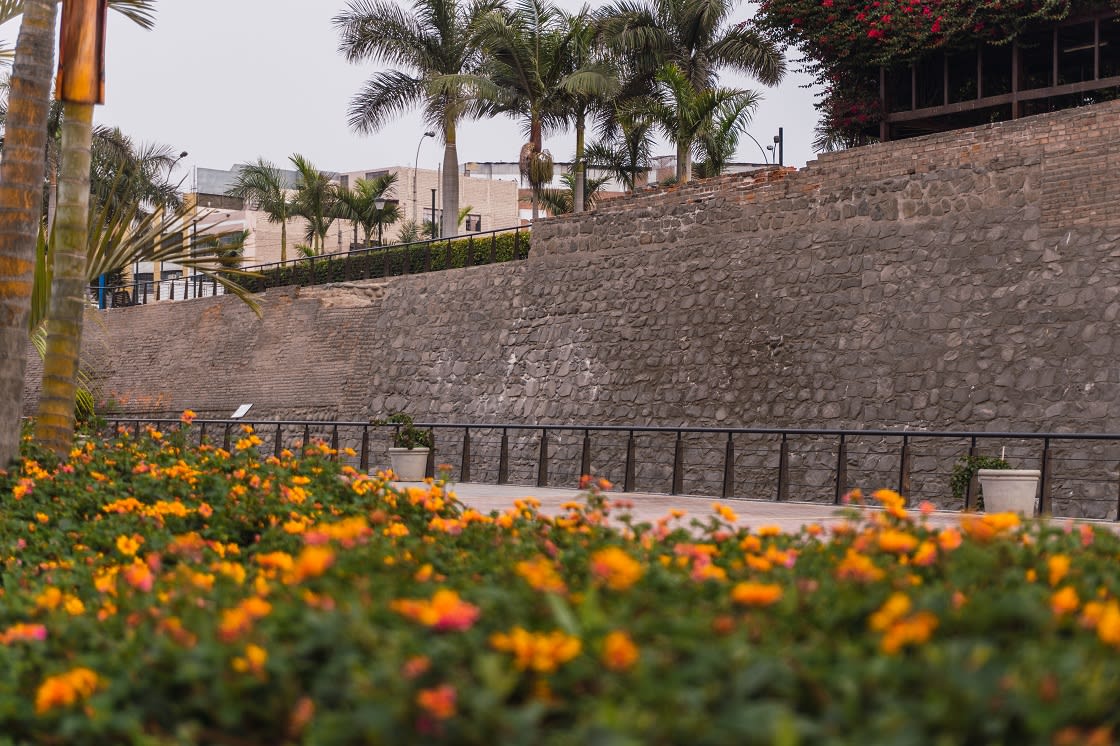
Parque De La Muralla, Lima
Here visitors can witness a fragment of the old wall that originally protected Lima from pirates during the seventeenth century. Also of note is a statue of the founder of Lima, Francisco Pizarro, and a museum displaying artifacts found in the area.
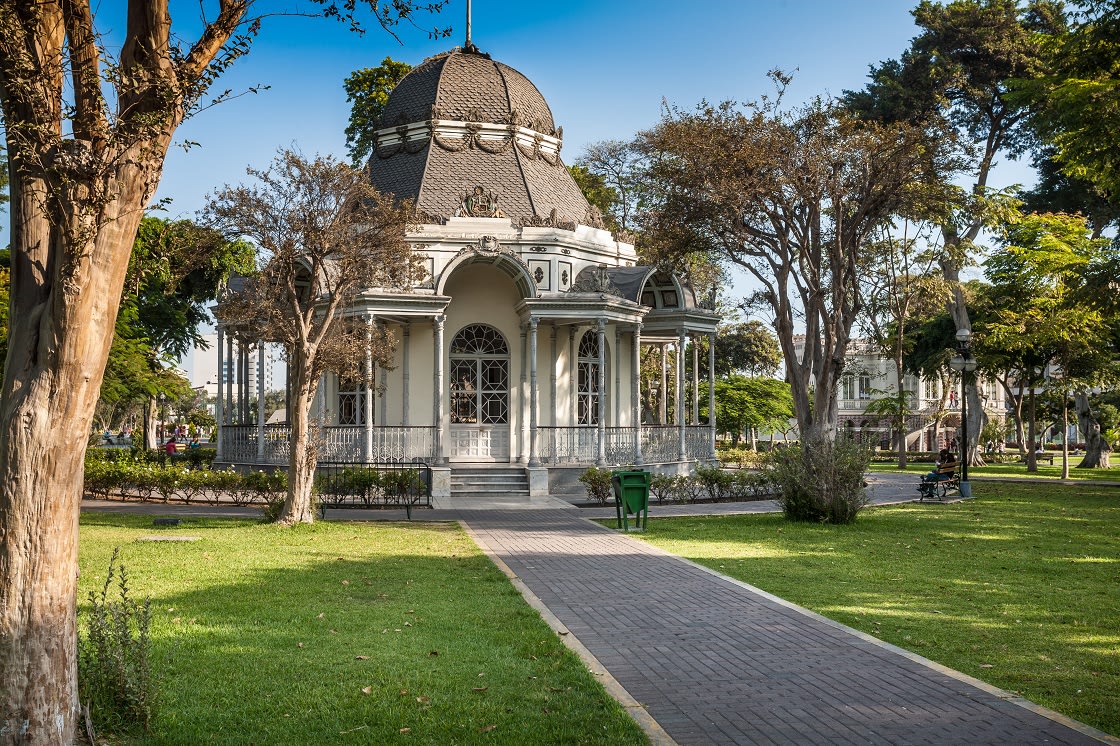
Parque De La Exposición In Lima
A beautiful park in the center of historic Lima, visitors to this park will be able to witness several monuments such as the Morisco Pavilion, the Seismograph, the Chinese Fountain, the Botanical Gardens, and the Japanese Garden. Areas dedicated to arts and entertainment include Puppet Island, the Open Theater and La Cabana Theater.

Parque De La Reserva And The Magic Circuit Of The Water
A unique departure from the ancient structures of Lima’s historic center, this newly modified park is a local and tourist favorite in Lima. Home to the largest fountain complex in the world, the fountains come alive each night with colored lights, laser beams, and movements coordinated to a variety of soundtracks. Beautiful, vibrant, and a favorite spot for pictures, travelers won’t want to miss this destination.
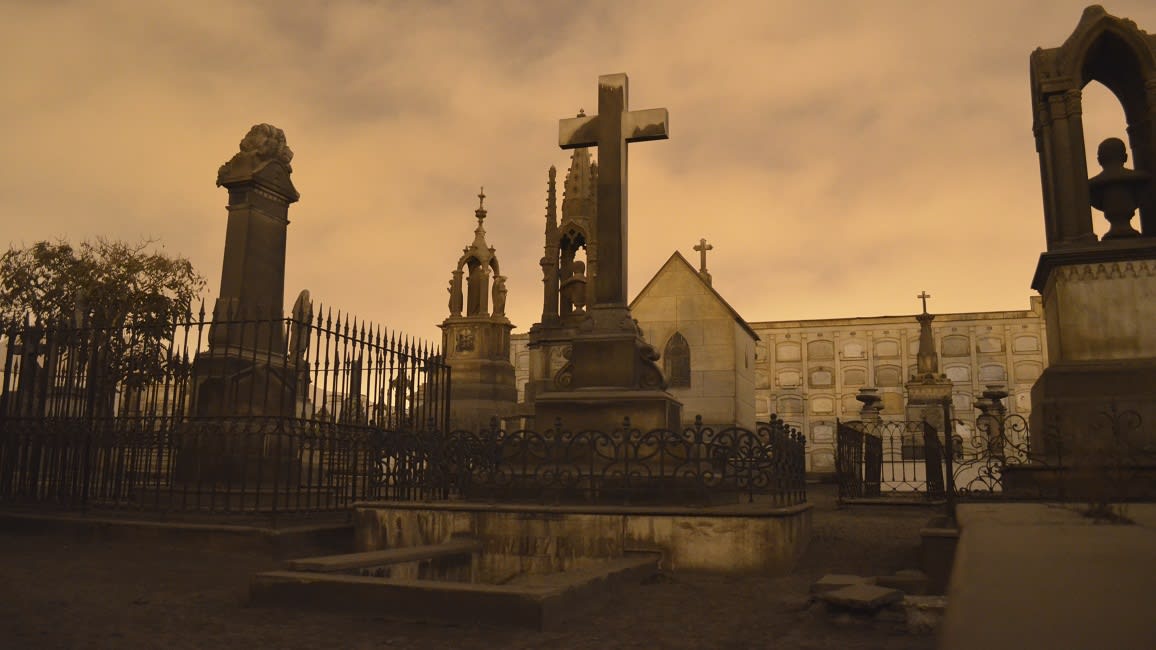
Presbítero Maestro Cemetery In Lima
The first cemetery in Lima, the Presbyter Matías Maestro General Cemetery was inaugurated in 1808. More than 766 Neoclassical mausoleums can be found here, with guided night visitors offering guests a glimpse on the last Thursday of each month.

Beautiful San Martín Square At Night
One of the most representative public spaces in Lima, Peru, the Plaza San Martin is located at the ninth block of Colmena avenue. Here you can find the famous, Hotel Bolivar, home to Lima’s best pisco sours.

San Francisco Church And Convent In Lima, Peru
The church and convent are part of the Historic Centre of Lima, which was added to the UNESCO World Heritage List in 1991. Aside from a church and monastery it also contains a library and catacombs. It is located one block northeast from the main Plaza Mayor.
Thanks to recent efforts by mayors of Lima, restoration of the historical downtown district of Lima has ensured that travelers and locals alike will be able to appreciate everything making it a UNESCO World Heritage Site. From intricate balconies on colonial buildings to remarkable collections of art to streets rich in a history that hasn’t been forgotten, the historic center of Lima is worth a visit on any trip to Peru. For more information about day tours in the historic downtown, contact us.
While Rainforest Cruises aim to provide accurate and up-to-date information, we make no representations as to the accuracy or completeness of any information herein or found by following any link on this site. Rainforest Cruises cannot and will not accept responsibility for any omissions or inaccuracies, or for any consequences arising therefrom, including any losses, injuries, or damages resulting from the display or use of this information.




